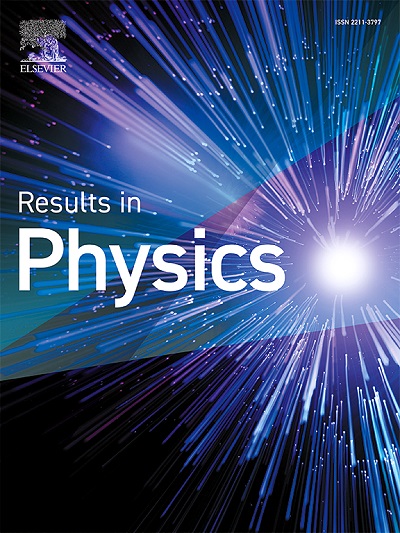Synergistic enhancement of SERS and superhydrophobicity on Si micropatterns fabricated with two-beam laser interference lithography
IF 4.6
2区 物理与天体物理
Q2 MATERIALS SCIENCE, MULTIDISCIPLINARY
引用次数: 0
Abstract
This study introduces a novel approach for enhancing both surface-enhanced Raman scattering (SERS) sensitivity and super-hydrophobicity of silicon micropatterns (SiMPs) fabricated through two-beam laser interference lithography (TBLIL). By integrating micro/nanostructured Si surfaces with superior SERS performance and hydrophobic properties, this platform holds promise for advanced sensing and self-cleaning applications. The TBLIL method offers precise control over micropattern geometry and periodicity, creating localized “hot spots” that amplify the Raman signals, facilitating the detection of low-concentration analytes with high sensitivity. Additionally, the microstructured surface ensures superhydrophobicity, prevents contamination, and enhances the stability and reproducibility of SERS measurements. Characterization techniques, including scanning electron microscopy (SEM), Atomic force microscope (AFM), Raman spectroscopy, and contact angle measurements, confirmed significant improvements in the SERS sensitivity and durability of the superhydrophobic surface. This dual-functional platform opens new avenues in biosensing, environmental monitoring, and surface coatings, offering a versatile solution to challenges in materials science and nanotechnology.

双光束激光干涉光刻技术制备硅微图的SERS和超疏水性协同增强
本研究提出了一种新的方法来提高双光束激光干涉光刻(TBLIL)制备的硅微图(SiMPs)的表面增强拉曼散射(SERS)灵敏度和超疏水性。通过集成具有优异SERS性能和疏水性的微/纳米结构Si表面,该平台有望实现先进的传感和自清洁应用。TBLIL方法提供了对微图案几何形状和周期性的精确控制,产生局部“热点”,放大拉曼信号,促进低浓度分析物的高灵敏度检测。此外,微结构表面确保了超疏水性,防止污染,并提高了SERS测量的稳定性和可重复性。表征技术,包括扫描电子显微镜(SEM)、原子力显微镜(AFM)、拉曼光谱和接触角测量,证实了超疏水表面在SERS灵敏度和耐久性方面的显着改善。这个双功能平台为生物传感、环境监测和表面涂层开辟了新的途径,为材料科学和纳米技术的挑战提供了一个通用的解决方案。
本文章由计算机程序翻译,如有差异,请以英文原文为准。
求助全文
约1分钟内获得全文
求助全文
来源期刊

Results in Physics
MATERIALS SCIENCE, MULTIDISCIPLINARYPHYSIC-PHYSICS, MULTIDISCIPLINARY
CiteScore
8.70
自引率
9.40%
发文量
754
审稿时长
50 days
期刊介绍:
Results in Physics is an open access journal offering authors the opportunity to publish in all fundamental and interdisciplinary areas of physics, materials science, and applied physics. Papers of a theoretical, computational, and experimental nature are all welcome. Results in Physics accepts papers that are scientifically sound, technically correct and provide valuable new knowledge to the physics community. Topics such as three-dimensional flow and magnetohydrodynamics are not within the scope of Results in Physics.
Results in Physics welcomes three types of papers:
1. Full research papers
2. Microarticles: very short papers, no longer than two pages. They may consist of a single, but well-described piece of information, such as:
- Data and/or a plot plus a description
- Description of a new method or instrumentation
- Negative results
- Concept or design study
3. Letters to the Editor: Letters discussing a recent article published in Results in Physics are welcome. These are objective, constructive, or educational critiques of papers published in Results in Physics. Accepted letters will be sent to the author of the original paper for a response. Each letter and response is published together. Letters should be received within 8 weeks of the article''s publication. They should not exceed 750 words of text and 10 references.
 求助内容:
求助内容: 应助结果提醒方式:
应助结果提醒方式:


